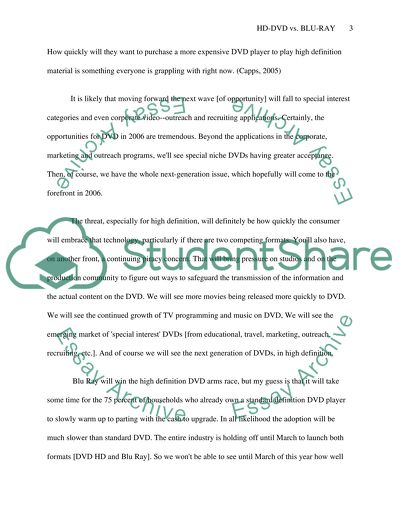Cite this document
(The Eternal Debate: HD-DVD vs. BLU-RAY Essay Example | Topics and Well Written Essays - 1750 words, n.d.)
The Eternal Debate: HD-DVD vs. BLU-RAY Essay Example | Topics and Well Written Essays - 1750 words. https://studentshare.org/technology/1509766-hd-dvd-vs-blu-ray
The Eternal Debate: HD-DVD vs. BLU-RAY Essay Example | Topics and Well Written Essays - 1750 words. https://studentshare.org/technology/1509766-hd-dvd-vs-blu-ray
(The Eternal Debate: HD-DVD Vs. BLU-RAY Essay Example | Topics and Well Written Essays - 1750 Words)
The Eternal Debate: HD-DVD Vs. BLU-RAY Essay Example | Topics and Well Written Essays - 1750 Words. https://studentshare.org/technology/1509766-hd-dvd-vs-blu-ray.
The Eternal Debate: HD-DVD Vs. BLU-RAY Essay Example | Topics and Well Written Essays - 1750 Words. https://studentshare.org/technology/1509766-hd-dvd-vs-blu-ray.
“The Eternal Debate: HD-DVD Vs. BLU-RAY Essay Example | Topics and Well Written Essays - 1750 Words”. https://studentshare.org/technology/1509766-hd-dvd-vs-blu-ray.


